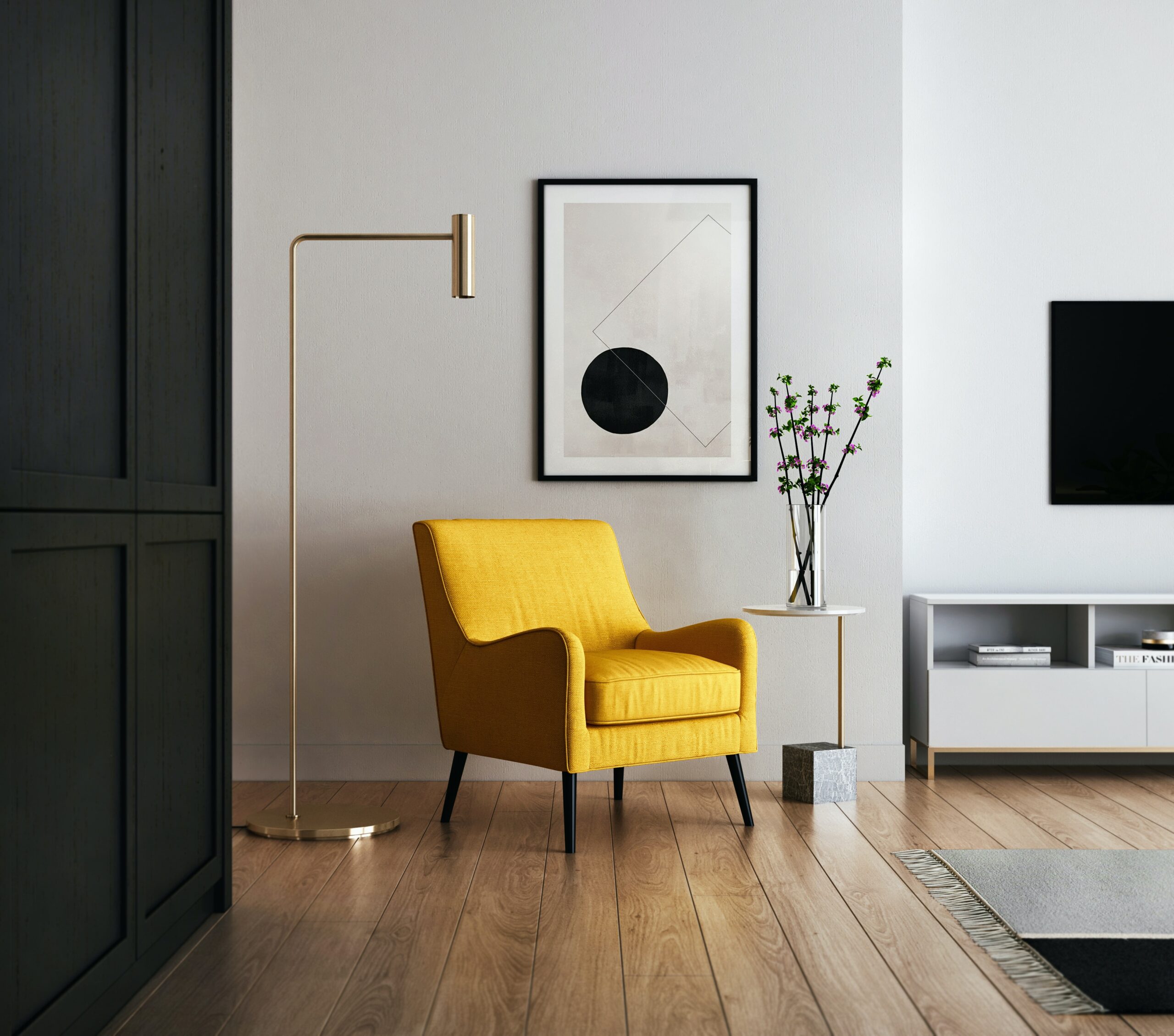[vc_row][vc_column][vc_column_text]
Embark on a journey through the foundational principles and elements of interior design.
- Balance Matters: Achieving balance is fundamental; distribute visual weight evenly for a harmonious space.
- Harmony in Diversity: Create harmony by unifying diverse elements through color, texture, or theme.
- Scale and Proportion: Consider the scale of furniture and decor items relative to the space for visual cohesion.
- Contrast Creates Interest: Introduce contrast to add interest; play with colors, textures, and shapes.
- Rhythm and Repetition: Establish a rhythm through the repetition of elements, creating a sense of movement.
- Focal Points: Designate focal points to draw attention and anchor the room’s design.
- Unity in Color Palette: Maintain unity with a cohesive color palette throughout the space.
- Natural Lighting: Prioritize natural lighting to enhance the overall ambiance and mood.
- Task Lighting: Strategically use task lighting for specific functional areas and activities.
- Accent Lighting: Illuminate architectural features or artwork with well-placed accent lighting.
- Layered Lighting: Combine ambient, task, and accent lighting for a layered and versatile illumination.
- Spatial Awareness: Understand the spatial dynamics to optimize flow and functionality.
- Functionality is Key: Prioritize functionality without compromising aesthetic appeal.
- Proper Furniture Placement: Arrange furniture to facilitate conversation and movement within the room.
- Negative Space: Appreciate the power of negative space to avoid clutter and promote visual clarity.
- Color Psychology: Understand the psychological impact of colors and use them intentionally.
- Texture Variety: Infuse texture with a mix of materials to add depth and tactile interest.
- Pattern Play: Experiment with patterns, but ensure they complement rather than clash.
- Cohesive Theme: Maintain a cohesive theme throughout the space for a unified look.
- Art as Anchors: Use art pieces as visual anchors to set the tone for the room.
- Effective Wall Art: Consider wall art in relation to wall space, ensuring it complements the overall design.
- Proper Rug Sizing: Choose rugs of appropriate sizes to define and ground specific areas.
- Open Floor Plans: Strategically divide open floor plans using furniture arrangements or area rugs.
- Indoor-Outdoor Connection: Create a seamless connection between indoor and outdoor spaces.
- Cabinet and Storage Solutions: Optimize storage solutions to maintain a clutter-free environment.
- Flexible Furniture: Invest in flexible furniture for adaptability and multifunctional spaces.
- Modular Furniture: Embrace modular furniture for versatility and easy rearrangement.
- Statement Furniture Pieces: Introduce statement furniture pieces for visual interest and character.
- Window Treatments: Choose window treatments that enhance natural light and complement the design.
- Personalized Accessories: Infuse personal touches through accessories for a unique, lived-in feel.
- Greenery and Plants: Incorporate greenery for a natural and refreshing element.
- Proper Room Layouts: Pay attention to room layouts, ensuring furniture fits comfortably.
- Architectural Details: Highlight and enhance architectural features for added visual appeal.
- Temperature Control: Consider temperature control through proper insulation and ventilation.
- Acoustic Considerations: Address acoustic concerns with appropriate materials for sound absorption.
- Smart Home Integration: Seamlessly integrate smart home technology for modern convenience.
- Ergonomic Design: Prioritize ergonomic design for comfort and well-being.
- Universal Design Principles: Consider universal design principles for inclusivity and accessibility.
- Vintage and Antique Elements: Integrate vintage or antique elements for timeless charm.
- Consistent Style: Maintain a consistent style throughout rooms for a cohesive home aesthetic.
- Flexibility in Layouts: Design layouts with flexibility to accommodate changing needs.
- Personalized Color Schemes: Tailor color schemes to reflect personal preferences and style.
- Environmental Considerations: Make environmentally conscious choices in materials and practices.
- Customization Opportunities: Explore customization options for furniture and decor pieces.
- Maximize Natural Views: Position furniture to maximize natural views and outdoor connections.
- Wall-to-Wall Carpets: Consider the use of wall-to-wall carpets for a cozy and unified look.
- Transitional Spaces: Pay attention to transitional spaces, ensuring a smooth flow between areas.
- Layered Window Treatments: Layer window treatments for a versatile and sophisticated look.
- Statement Ceilings: Elevate design by making ceilings a statement feature with color or texture.
- Adaptable Color Schemes: Choose adaptable color schemes for versatility in design updates.
- Continuous Evolution: Recognize that interior design is an ongoing, evolving process of refinement.
By embracing these principles and elements, you can navigate the world of interior design with confidence and creativity, creating spaces that are both functional and visually captivating.
[/vc_column_text][vc_empty_space][vc_gallery type=”image_grid” images=”10876,10873,10869,10866,10863,10860,10854,10851,10825,10822,10813,10780,10703,10696,10694,10714,10712,10630,10626,10606,10609″ img_size=”300×300″][vc_empty_space][vc_column_text]Useful links | Interior Design | Interior Design company in Delhi NCR | Interior Design Cost in Gurgaon | Low budget interior designer in Gurgaon | Interior Design Firm | Interior Designer Ideas | Interior Designer in Noida Extension | Interior A to Z | Interior Designer in Gurgaon[/vc_column_text][vc_empty_space][vc_empty_space][vc_pinterest][vc_empty_space][vc_empty_space][vc_tweetmeme][vc_empty_space][/vc_column][/vc_row]
